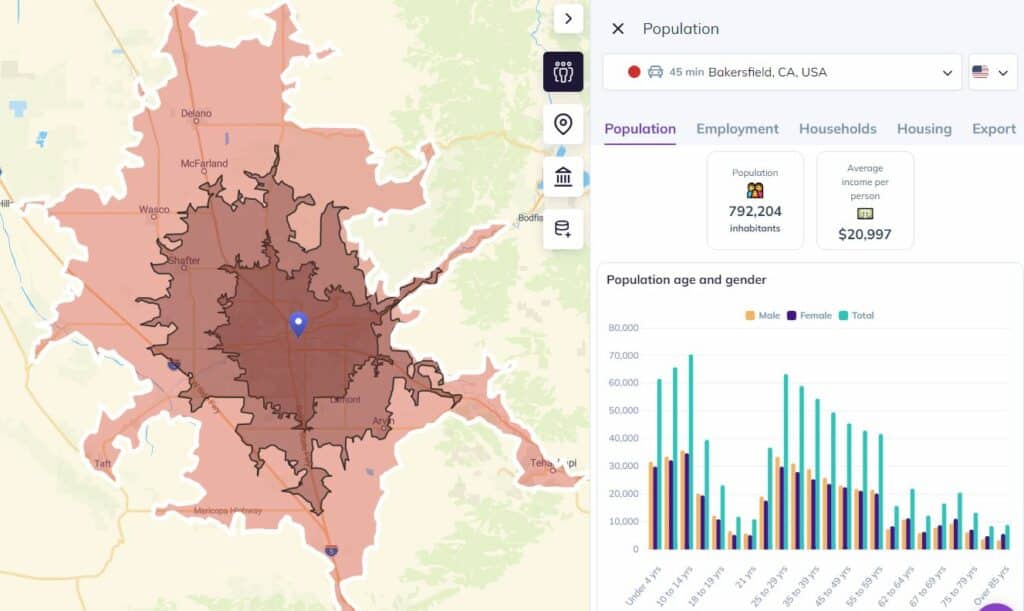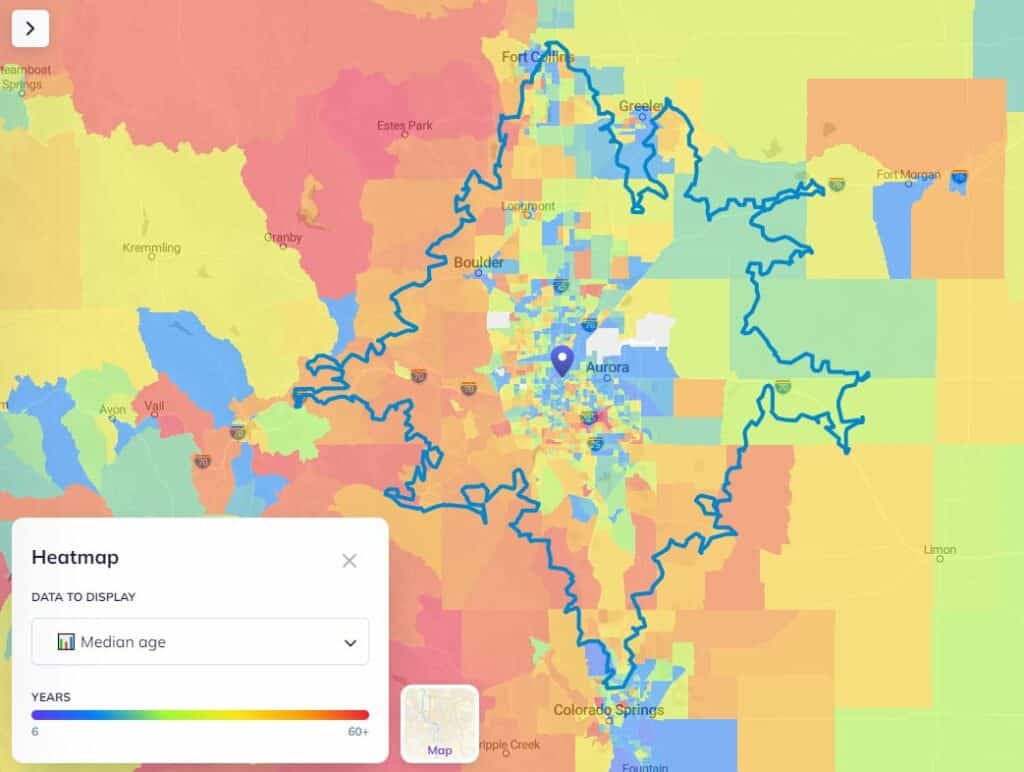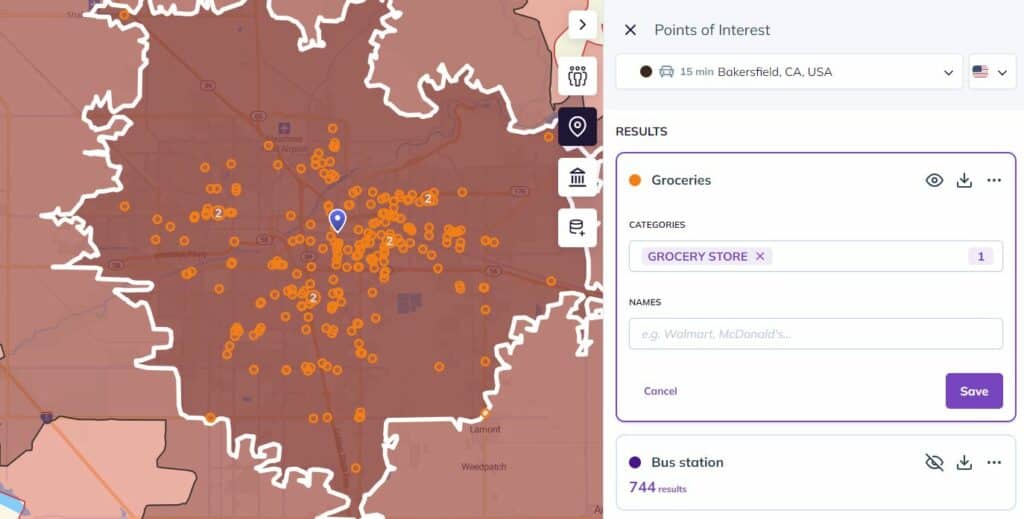A brand-new business only has one concern when it comes to customers: getting more of them. But as soon as it reaches a certain size, you need to start worrying about getting the right kind of customer. What kind of person — or business — brings in the most revenue? Who is a natural fit for the product or service you offer? When you build an ideal customer profile, you’ll answer these questions and more, creating more revenue with less work.
Here’s how it works.
TL;DR
As your business grows, it’s crucial to focus on attracting the right kind of customers—those who bring in the most revenue and are the best fit for your product or service. Building an ideal customer profile (ICP) helps you do this by grouping customers based on key characteristics. You can use location intelligence tools like Smappen to enrich your ICP with demographic and geographic insights, improving your marketing strategies, optimizing logistics, and identifying competitive opportunities.
What is an ideal customer profile?
A customer profile is made up of characteristics that allow you to group up similar customers. These characteristics can include demographic information, the size of the company they work for, the average amount they spend on your product or service, and where they’re from. Companies will build multiple profiles to represent different customers and tailor their marketing strategy for each one.
An ideal customer profile (or ICP) is a detailed description of the type of customer that brings in the most revenue for your business. It’s based on data, such as customer demographics, purchasing habits, and even geographic location. By identifying your ICP, you can target people or businesses who are more likely to buy from you, allowing you to use your resources more effectively.
How to build an ideal customer profile
Step 1. Gather up your customer data
Whether you’re using a dedicated CRM (customer relationship management platform) or a spreadsheet, building your ICP starts with getting all your customer data in one place. You’ll want to get as much detail as possible, meaning you might have to gather this data from multiple sources. You won’t need any contact information — beyond an address — but the more details you collect—like purchase history, demographics, and geographic data—the more accurate your ICP will be.
Step 2. Identify customer types with key characteristics
Once you have your customer data, it’s time to break it down. While the exact characteristics might vary depending on your business, these examples are usually pretty useful across all industries:
How much they’ll pay
Note that this isn’t how much they’re paying for your product or service right now, but how much they can pay.
For a B2B — business-to-business — company, that’ll be the size of the company the customer works at.
For a B2C — business-to-consumer — company, that’ll be that customer’s budget or income level.
Industry/Job
For B2B companies, industry will be one of the most important characteristics of your ICP. Is your product particularly tailored to mechanics? Retailers? White-collar professionals? For B2C companies, your customer’s job title can be an important part of their profile, too.
Geography
Is your product more popular in specific neighborhoods? Maybe specific countries are more likely to purchase your online service? The scale of the geography involved will depend on your business’s reach. A local fast food joint might only care about nearby neighborhoods, while a multinational chemical corporation will analyze entire countries.
Demographics
Some services are more popular with women. Some products are only accessible to people with a certain level of income. Ethnicity, education level, and even home ownership can be part of your customer’s demographics.
Step 3. Group similar customers together
Based on these characteristics to identify your ICP, start grouping customers who share similar traits.
For example, you might find that medium-sized companies in the tech industry are your best customers, or that your product is popular among young professionals living in urban areas. Or maybe mid-size companies in the manufacturing industry are particularly likely to buy your product. Software engineers from Seattle who make six figures might be a big part of your customer base.
Step 4. Name and define your profiles
After grouping similar customers, you’ll need to identify the ones that bring in more revenue and give each profile a name and define its key traits. You might end up with multiple ICPs, which is perfectly normal. Naming them helps keep things organized and makes it easier to create targeted marketing strategies.
How Location Intelligence Enhances Your ICP
Location intelligence is what you get when you take data and represent it on a map. Most of the characteristics that make up your ICP — from demographics to income levels — can be used for this. With location intelligence, you’ll enrich your ICP, allowing you to enhance your marketing campaigns, optimize logistics, and more. Using tools like Smappen is the easiest way to combine location intelligence with your ICP and get even more data to work with. Here’s how that works.
Combine demographic data with your ICP
When you first build your ICP, you’re usually going to use internal data pulled from existing customers. But whether you don’t have enough internal data to build from or you just want to make your ICP more granular, demographic data is a great asset. Then, if you use a tool like Smappen to see how that data correlates with a specific location — like a new franchise — you can make your ICP that much more relevant.
Create your trade area and get access to demographic insights to start analyze your ICP.

Find your ICP in your trade area
With location intelligence, you can also estimate how many potential customers fit your ICP in a given area. This helps you determine whether a new market is worth pursuing.

Compare your ICP with the competition
Combining your ICP with location intelligence isn’t just great for improving your business; it’s a great way to scope out the competition, too. If you can get a good idea of what their ICP is like — often it’ll be a bit different from yours — you can use location intelligence to scope out their territories and see how big their market is.
Here is one way to do this with Smappen:
- Spot your competitors with the Points of Interest database
- Create areas for your main competitors
- Get demographic data about their catchment areas

Why building an ICP is crucial for Business Growth
Building an ideal customer profile is essential for a growing business. It’ll help you hone in on your perfect customer, meaning you’ll spend more of your resources acquiring customers that bring in more revenue and less on customers that might only buy from you once or twice. By adding in a location intelligence tool like Smappen, you can then combine that customer profile with demographic information on a map to support marketing initiatives, logistics, and more.
Frequently Asked Questions (FAQ)
A customer profile describes the general characteristics of a group of customers, while an ICP focuses specifically on those customers who generate the most revenue and are the best fit for your product or service.
An ICP helps you focus on high-value customers, saving you resources by marketing to those most likely to spend more and return frequently, rather than casting a wide net.
Customer data can be gathered from various sources, including your CRM platform, transaction history, surveys, or even social media insights.
Yes! Many businesses have multiple ICPs, especially if they offer a variety of products or services that appeal to different customer types.
Location intelligence helps you map out where your ideal customers are located. By using tools like Smappen, you can analyze geographic and demographic data to target areas with high concentrations of your ICP.
A trade area is the geographic region that your business serves. Identifying where your ideal customers are within this area helps ensure your marketing and operational efforts are targeted effectively.

